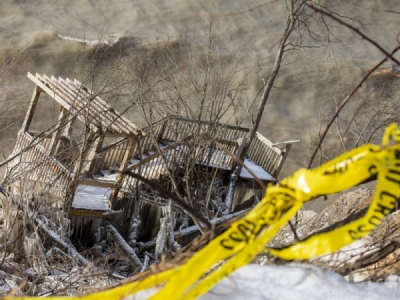
Posted on March 22, 2020
High Great Lakes water continues to be an issue for Michigan, even as the state mobilizes around fighting Coronavirus.
The situation puts county emergency management staff who work along state shorelines in the difficult situation of managing one crisis while keeping an eye open for the potential for another.
So far, officials said, work continues to mitigate damage risks.
The issue on the Great Lakes, said Luis Saldivia of the Michigan Department of Environment, Great Lakes and Energy, is years worth of record-setting rainfall descending onto the state.
“Our rivers are running well above a mean level, and that’s certainly contributing to what’s going on in our Great Lakes,” Saldivia said Wednesday during a webinar organized by the West Michigan Sustainable Business Forum.
High water forecasts continue along the state’s coastlines, and that follows a year when homes, communities and infrastructure already saw widespread damage from erosion.
The water-level difference from 2013 to today in Lakes Huron and Michigan is about 5.5 feet, Saldivia said, and that’s ‘a significant elevation difference.’ The situation on rivers is similar, he added. The Grand River at Grand Rapids has already poured more water into Lake Michigan than an average complete year of water.
Meanwhile, as Michigan responds to Coronavirus, that public health situation is changing rapidly.
But, so far, Saldivia said, the state is continuing to do what it can to help lakeshore homeowners and communities prepare for still-higher water and erosion damage.
As of early March, 208 structures in eight counties are considered at risk, with 18 of them in the most precarious positions of 10 feet or less from falling into the lake.
The state in late 2019 started to expedite permits for shoreline construction. That effort fast-tracks work like seawalls, and EGLE staff is still doing that even with many employees working remotely.
So far, Saldivia added, at least 500 permits have been approved for Great Lakes shoreline projects, “and that number is going to increase.”
“As of right now, we’re still conducting inspections,” Saldivia said.
However, he advised that people contact the office to determine more details about what to expect. Those inspections may be done without homeowners or contractors on site to allow social distancing.
Erin Kuhn, executive director of the West Michigan Shoreline Regional Development Commission, agreed on the need to stay in touch with officials about work and expectations as shoreline properties and communities grapple with erosion.
“Business will, I think, continue to go on, but things are changing very rapidly,” Kuhn said.
She continued: “Issues will be handled, but it might take some time.”
Source: mlive





